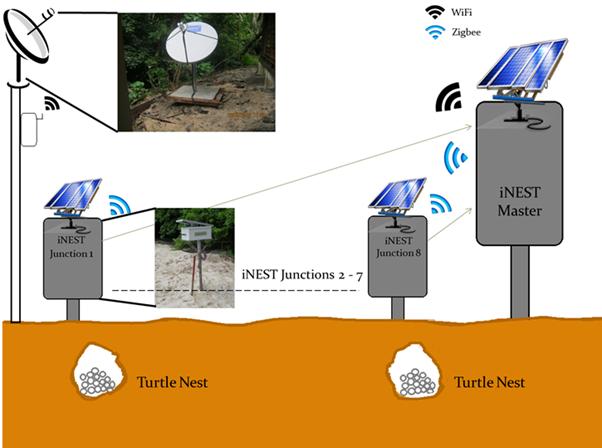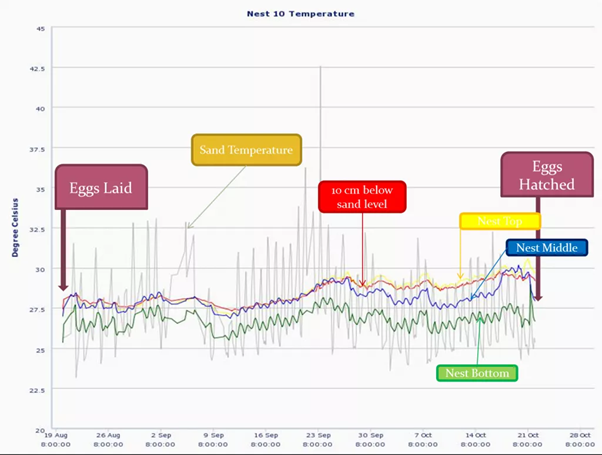This endeavor by Envirosense Technology along with the one of leading University Research Unit was on remote location IoT and how to efficiently execute ENVIROSENSE in this environment.
The purpose of this initiative was for scientific research on turtle nesting habits for the university. Through the utilization of small form junction boxes and remote data transmission using satellite internet, data on temperatures and activity within the nest were obtained.
For Envirosense Technology, it was a technical challenge to test our ENVIROSENSE platform’s remote IoT capabilities, for the university, it gave them valuable turtle nesting data.



